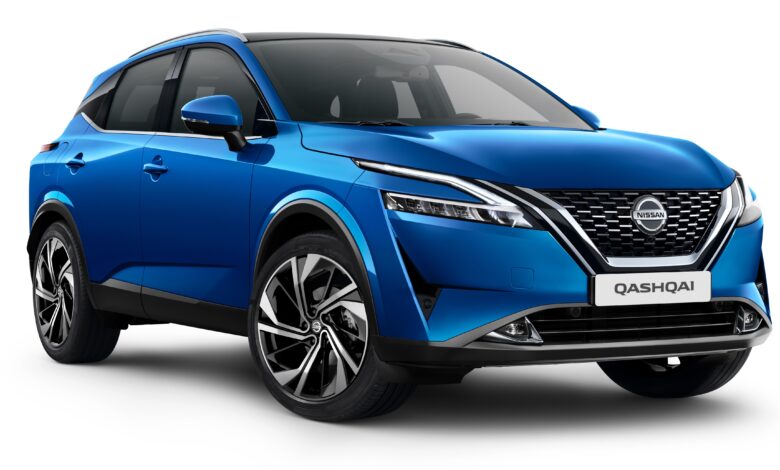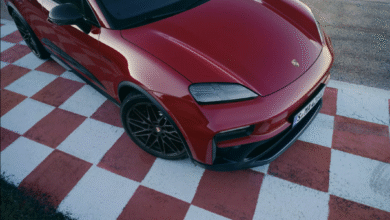2024 Nissan Qashqai e-Power Test Drive: Exploring the Future of Hybrid Performance

The Nissan Qashqai, a flagship model for the brand in Europe, is receiving an update that enhances its appearance without significantly altering its core attributes. Fortunately!
A Legacy of Success
Before the quirky Juke made waves with its divisive design in 2010, Nissan took a bold step with the original Qashqai in 2007. At that time, the SUV and crossover trend was just beginning to take hold, leading many to question the practicality of this new vehicle class. However, Nissan hit a home run, witnessing a surge in orders. Despite facing heightened competition from rivals like the BMW X1 and Mercedes-Benz GLA in subsequent generations, the Qashqai remains a best-seller across many markets, consistently selling over 110,000 units annually and even doubling those numbers during peak years, totaling over four million sales.
Design and Technological Upgrades
While it might be challenging to pinpoint the changes between the previous and current models, the 2024 Qashqai stands out. New headlights and taillights with striking red and transparent elements are eye-catching, but the most notable change is the grille design, which some say resembles that of the latest Peugeot 3008, while Nissan likens it to a samurai’s armor. Regardless, this transformation is evident!
New color options and wheel choices further enhance the fresh feel, but the real transformation occurs inside the cabin. Previously criticized for lower-quality materials, particularly in the lower plastic sections, the Qashqai now boasts a superior finish in higher trims, featuring Alcantara upholstery that adorns the dashboard and door panels. While some areas, like the glove compartment, may still use less appealing materials, the Qashqai now competes more effectively with rivals, especially with enhanced seating and equipment options. The 360-degree camera system is now interactive, allowing the driver to focus on specific zones (from eight around the vehicle) via the central touchscreen.
Advanced Visibility Features
For improved visibility, the Qashqai offers an “invisible bonnet” feature, a technology previously seen in Land Rover vehicles. By capturing and reconstructing images without the hood, this system enhances front visibility for detecting nearby obstacles. It also helps spot approaching vehicles at intersections and, according to Nissan, remembers GPS coordinates of intersections to recognize them during routine trips.
Consistent Hybrid Powertrain
While the Juke hybrid shares some technology with the Renault Captur and Dacia Duster, the e-Power system in the Qashqai is unique to Nissan.
This innovative setup allows the vehicle to operate as an all-electric SUV, where the internal combustion engine is only used to generate electricity for the electric motor. Specifically, a 190-hp engine powers the front wheels, supported by a 1.8 kWh battery that charges during braking and through a generator powered by a 158-hp three-cylinder turbo engine. Unlike Honda’s hybrid systems, which can use the internal combustion engine for propulsion at higher speeds, Nissan’s approach means the Qashqai may not be particularly economical on highways, but it excels in other scenarios.
Drivers experience the feel of an electric vehicle, with constant torque and a quiet, smooth operation. Even when the internal combustion engine kicks in to meet higher power demands, it remains quieter than many competitors, such as Toyota hybrids. For 2024, Nissan has also improved sound insulation with thicker door seals and side windows.
The only drawback, shared with its Japanese counterparts, is that the e-Power system isn’t ideal for mountainous driving, where the internal combustion engine becomes more audible. Nevertheless, Nissan has retained distinct features to enhance the driver’s experience, including an EV button that prioritizes electric driving, provided the battery allows.
Driving Experience
While the Qashqai doesn’t prioritize thrilling driving dynamics, it offers a pleasant driving experience. The steering has been slightly refined for improved communication, delivering enjoyable agility while maintaining predictable handling. Nissan doesn’t aim for class-leading performance but rather offers an attractive compromise. This is particularly appreciated given the quality of the suspension, though larger optional wheel sizes may affect performance, as is common with modern vehicles. A significant positive is that Nissan opted against fully touch-based controls during the update, retaining many traditional buttons for ease of use.
Conclusion
Overall, the Qashqai remains a delightful vehicle to live with and drive—economical and comfortable for everyday use, although it may struggle during long highway trips or in mountainous areas. The range starts at an attractive price of €34,700, while the appealing e-Power hybrid variant is priced around €40,000 for entry-level models, climbing to nearly €50,000 for high-end versions, including the new sporty N-Design+ trim.
For more details on Nissan’s innovative technology, check out Nissan’s official site and explore their latest hybrid offerings at Nissan e-Power.




